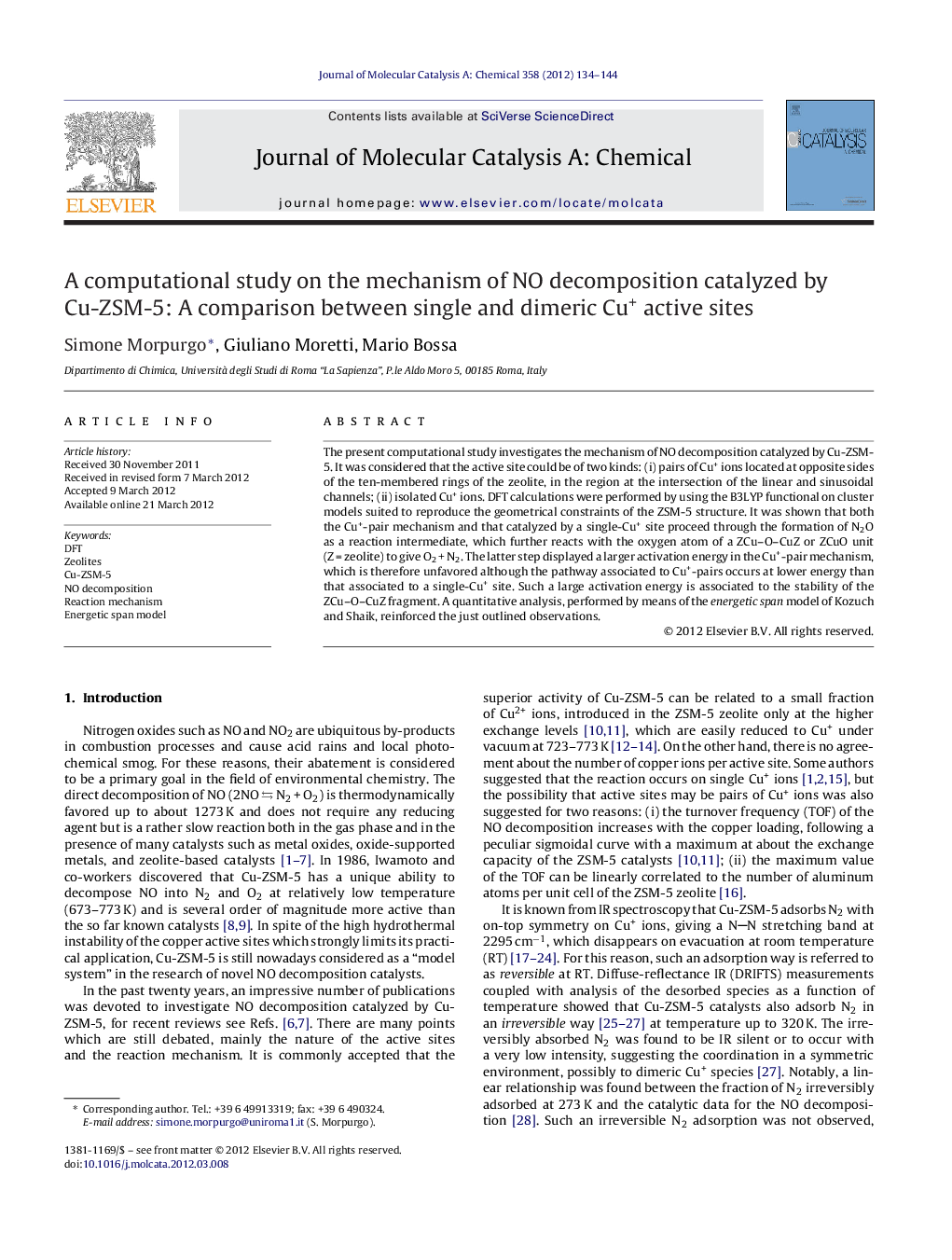| کد مقاله | کد نشریه | سال انتشار | مقاله انگلیسی | نسخه تمام متن |
|---|---|---|---|---|
| 66259 | 48421 | 2012 | 11 صفحه PDF | دانلود رایگان |

The present computational study investigates the mechanism of NO decomposition catalyzed by Cu-ZSM-5. It was considered that the active site could be of two kinds: (i) pairs of Cu+ ions located at opposite sides of the ten-membered rings of the zeolite, in the region at the intersection of the linear and sinusoidal channels; (ii) isolated Cu+ ions. DFT calculations were performed by using the B3LYP functional on cluster models suited to reproduce the geometrical constraints of the ZSM-5 structure. It was shown that both the Cu+-pair mechanism and that catalyzed by a single-Cu+ site proceed through the formation of N2O as a reaction intermediate, which further reacts with the oxygen atom of a ZCu–O–CuZ or ZCuO unit (Z = zeolite) to give O2 + N2. The latter step displayed a larger activation energy in the Cu+-pair mechanism, which is therefore unfavored although the pathway associated to Cu+-pairs occurs at lower energy than that associated to a single-Cu+ site. Such a large activation energy is associated to the stability of the ZCu–O–CuZ fragment. A quantitative analysis, performed by means of the energetic span model of Kozuch and Shaik, reinforced the just outlined observations.
Figure optionsDownload high-quality image (146 K)Download as PowerPoint slideHighlights
► The mechanism of NO decomposition catalyzed by Cu-ZSM-5 was investigated.
► The catalytic activity of Cu+ pairs was compared with that of a single Cu+ site.
► Cu+ pairs located at opposite sides of ten-membered ring of ZSM-5 were considered.
► DFT calculations were employed on cluster models.
► The mechanism catalyzed by Cu+ pairs is unfavored.
Journal: Journal of Molecular Catalysis A: Chemical - Volume 358, June 2012, Pages 134–144